Kanwrite Mammoth Review
They may have gone extinct 4,000 years ago, but the Mammoth has been successfully brought back to life—in fountain pen form! A review of the Kanwrite Mammoth fountain pen.
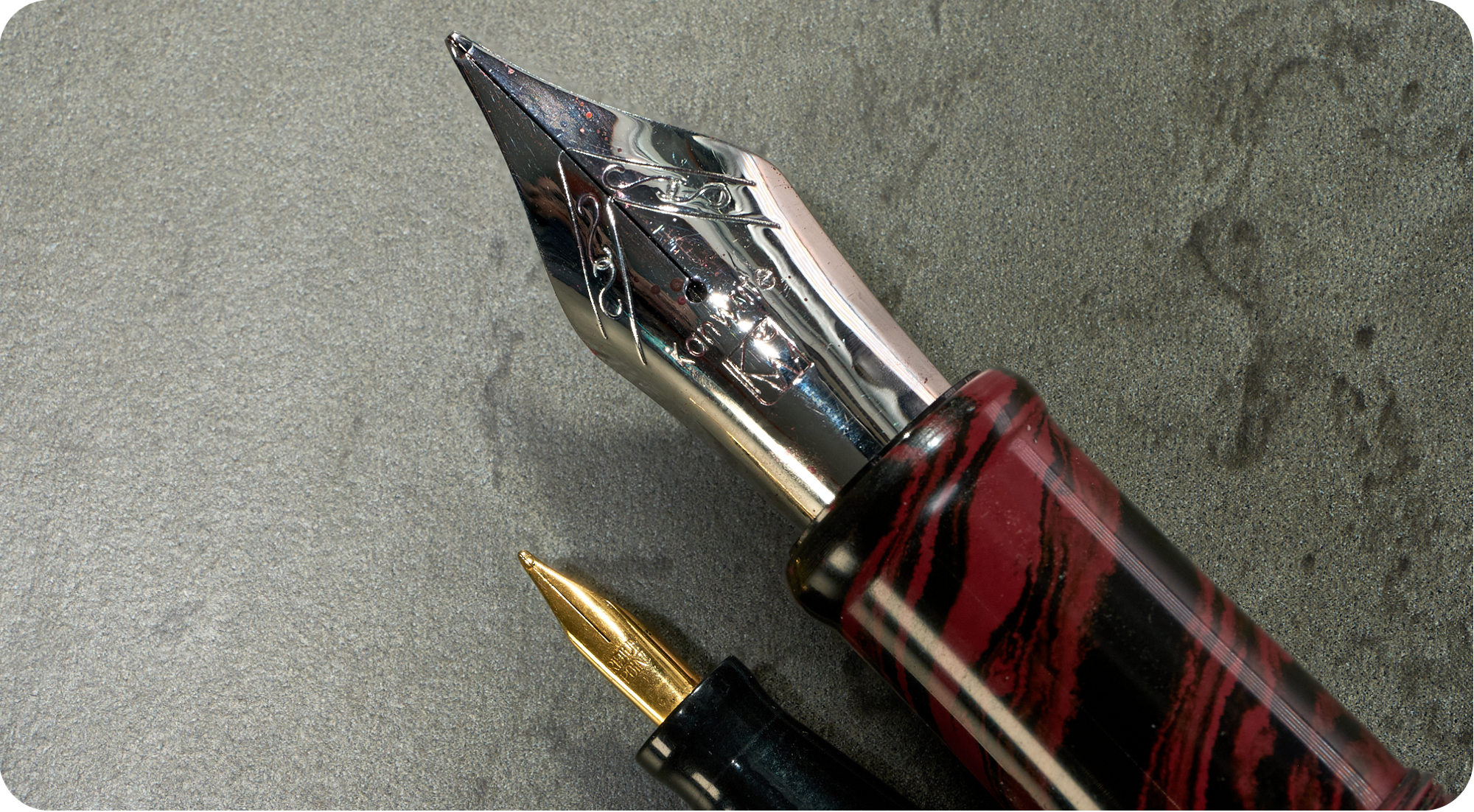
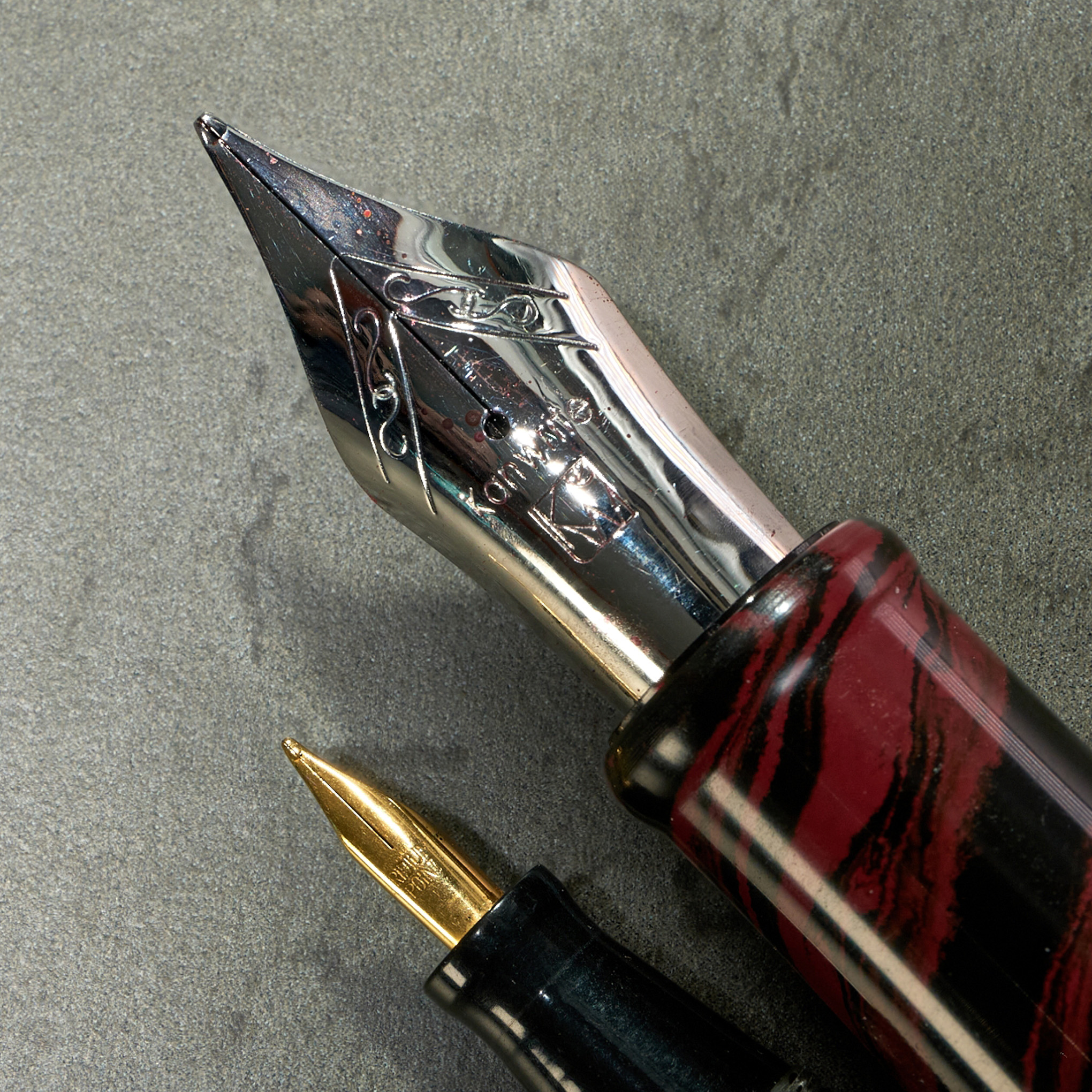
There are pens, and then there are PENS. Pens so huge that they verge on comically large. I've recently become much more aware of my preference for BIG pens when I'm doing longer writing sessions. I do adore small pocket pens—especially for quick notes—but the thinner & smaller a pen is, the more painful it starts to becomes for my lanky arthritic hands to use for extended periods. Larger pens significantly remedy this, which is why I enjoy Jinhao's X159 & Dadao 9019 models so much. Unfortunately, it's often the case that the larger & girthier a pen gets, the more organs I need to sell to afford it (Granted, my organs aren't worth much these days, but you get the point). At least, that was what I initially thought. There have been a few I've discovered recently that have bucked that trend. We're looking at one such pen today—the Kanwrite Mammoth. But what makes a pen Big-with-a-capital-B?
In my entirely unofficial opinion, If it can't fit in my 155mm callipers, it's in the running. However, just being long isn't enough, otherwise pens like the Lamy Joy, Platinum Carbon desk pen, and Pilot Parallel would fall under this category. There also needs to be some girth to them to make them feel substantial in the hand. Again, girth alone does not a Big pen make, as that would then include pens like the short but stout Moonman Q1. Weight doesn't play into my requirements all that much. A heavier pen can help add to the experience, but a lighter pen will be more comfortable to use for longer. This combination of qualifications are what exclude pens like the aforementioned X159 & 9019. They're big pens, for sure, but not Big pens.
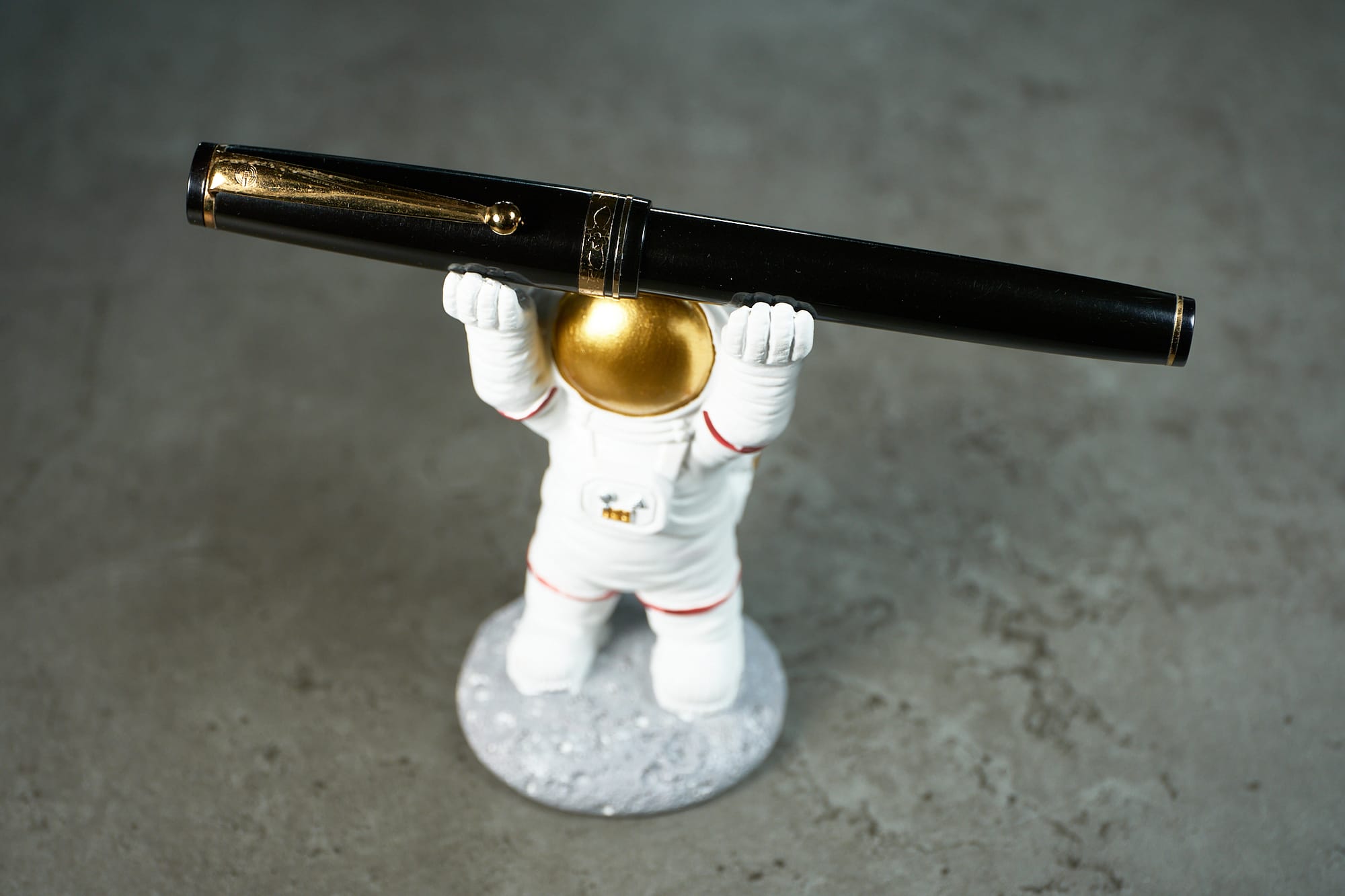
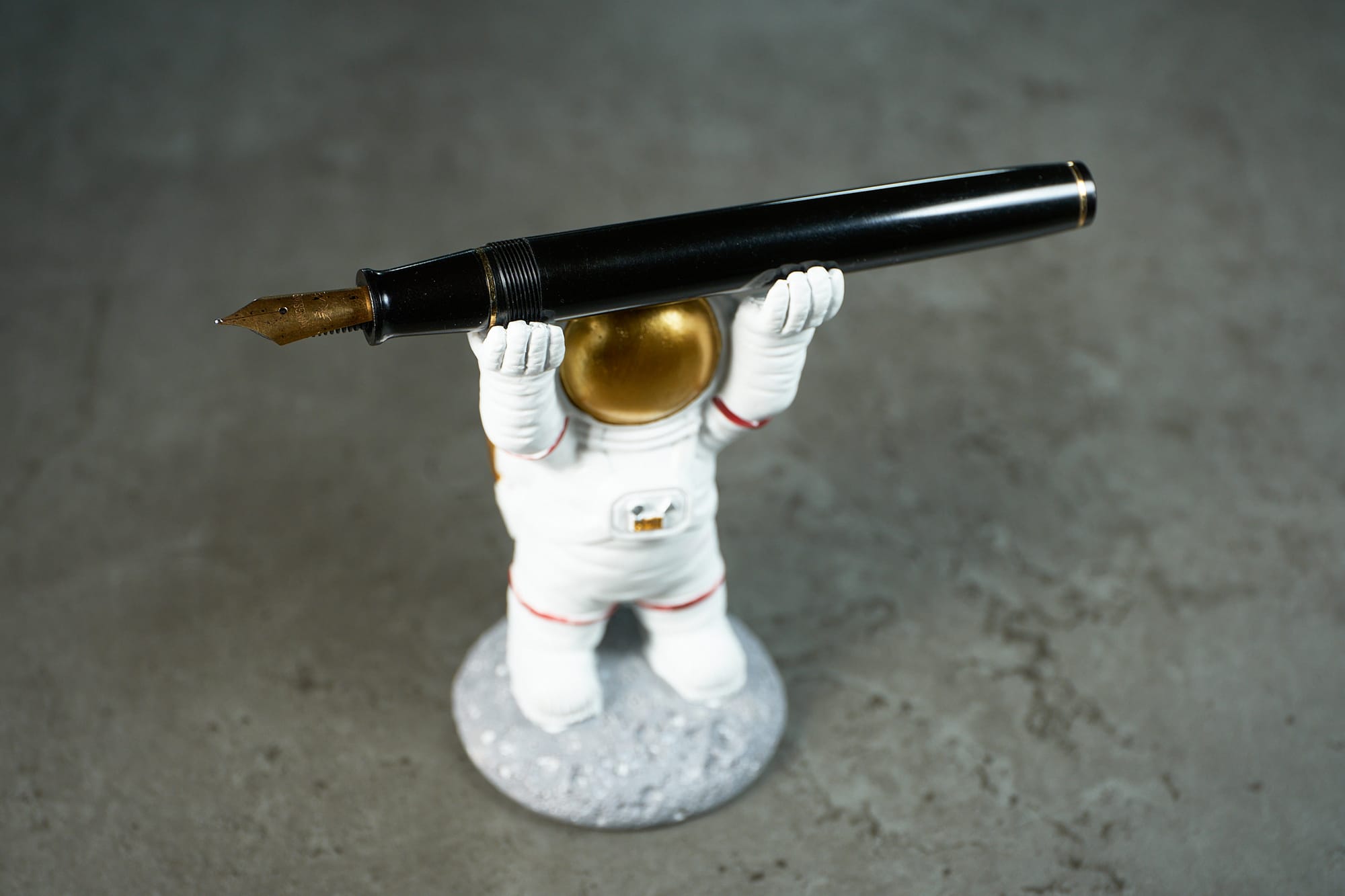
Piston knob, EF steel nib, cap finial, & piston window with piston visible
My first example is right on the cusp of being a Big pen. The Wing Sung 590 is the OG Big Chinese pen from the mid 90's. It's 159mm long, 14mm wide, & weighs in at a mere 25.5g. It's verging on being too narrow, but I'd say it just about qualifies. The #6-ish sized Medium nib is decent enough. It writes fairly nicely, but it's a product of its age made from very thin material & easily sprung. The clip also feels like it would snap off if I so much as looked at it wrong. These foibles aside, it does the job by being comfortable to hold & write with for long sessions.
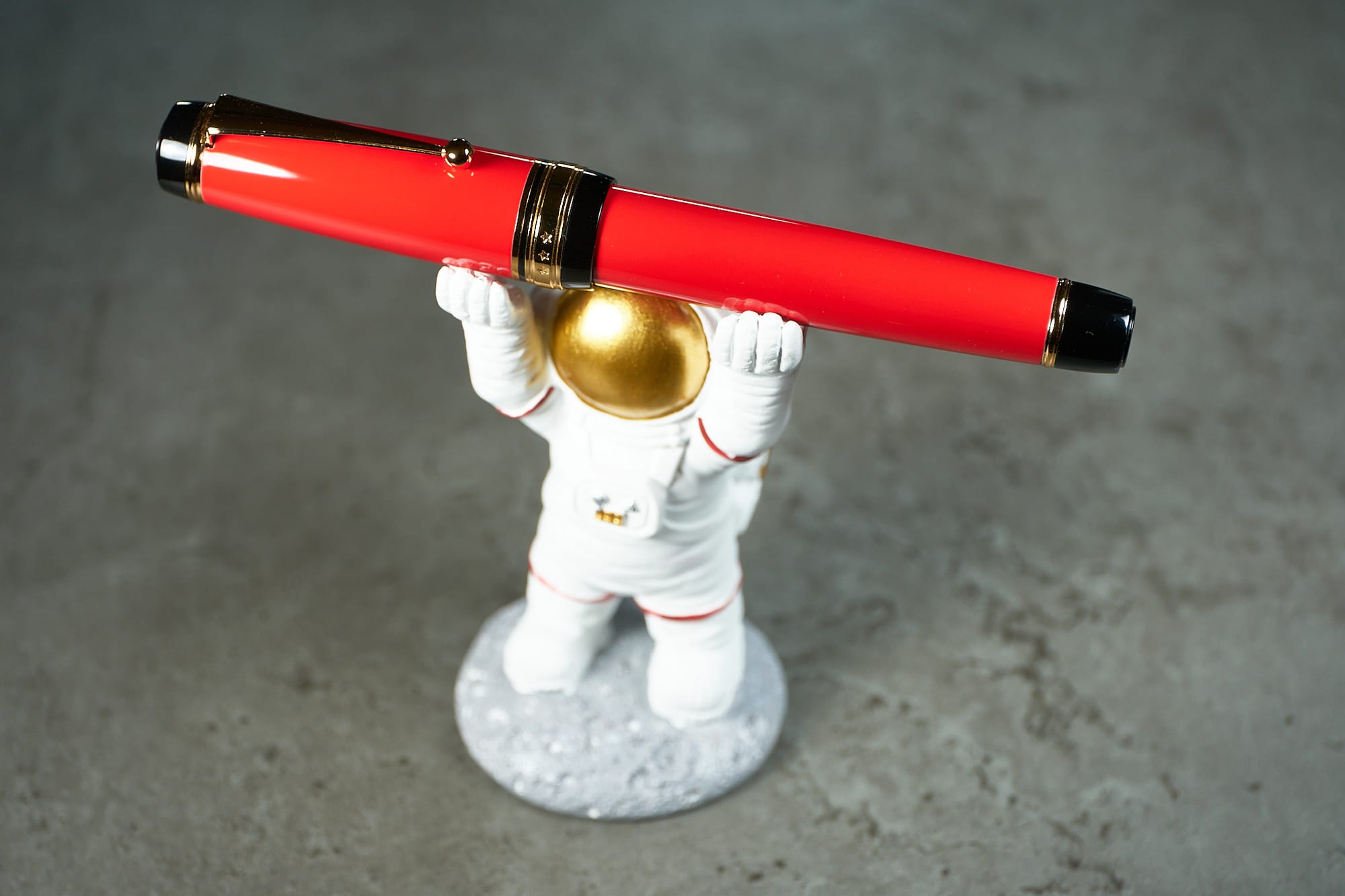

The Pilot Custom Uru... wait, no, it's the JD Big Pen
My next example is much more modern & easily qualifies: The aptly named JD Big Pen (also found under the Montefiore name)—a pen modelled after the ridiculously huge—and ridiculously expensive—Pilot Custom Urushi. It turns out it's actually slightly larger than the Custom Urushi at 156mm long, 16mm wide, & weighs in at a whopping 70g, but I feel they really missed a trick by fitting it with a #6 nib. It looks strangely small on such a large pen, far moreso than the Wing Sung thanks to it's thinner barrel & longer nib. I really feel this pen would benefit from a #8 nib, as there's more than enough room in the cap and it would look far more proportionally appropriate. That being said, it's a decent enough nib & writes well. I like this pen a great deal. It looks fantastic, and although it's heavy, it's very comfortable to use. I didn't think I'd ever come across anything bigger than this pen. Until I heard the rumblings of a true behemoth.
I can't remember exactly where I first came across the Mammoth, but during my "No-Buy January" I heard whispers of an exceptionally large pen from the Indian company Kanwrite. A huge pen, made of ebonite, with a giant #9 nib, for less than £75? Seems too good to be true, right? Well, to an extent, it was. Trying to find someone selling these was incredibly difficult. I eventually tracked down an Indian store called The Pen World who had one left and was willing to ship to the UK, but it was still January at that point, so I couldn't purchase it yet without breaking my pledge. It was an agonising wait, checking their page each day to make sure it was still in stock. As soon as the clock struck midnight & we passed over into February 1st, I hit buy. Thankfully they still had one, although it wasn't the solid black ebonite I'd originally wanted. Instead, it was the red swirl ebonite model that I wasn't particularly fussed on, as I'm not at all a fan of ebonite with the wood-effect striation. But, considering how difficult it had been to find this pen anywhere at all, the red swirl would do.
It took quite some time for the pen to get to me, mainly because of issues with the paperwork to get it on a plane, causing it to get sent back to the seller. We eventually got this sorted, and it arrived safely on the 26th. I'm used to waiting weeks—even months—for orders from China, so I wasn't too bothered about the delays.
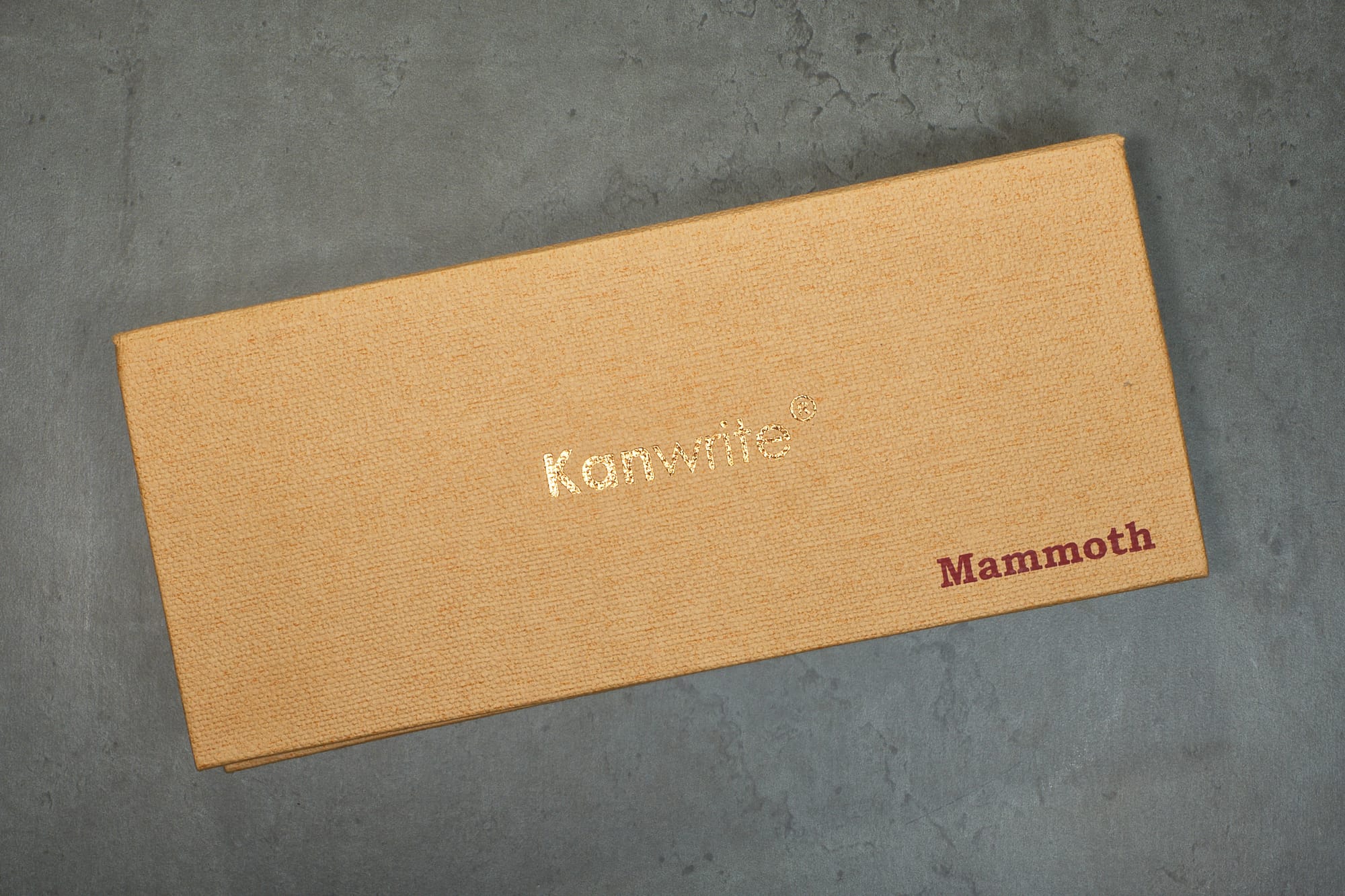
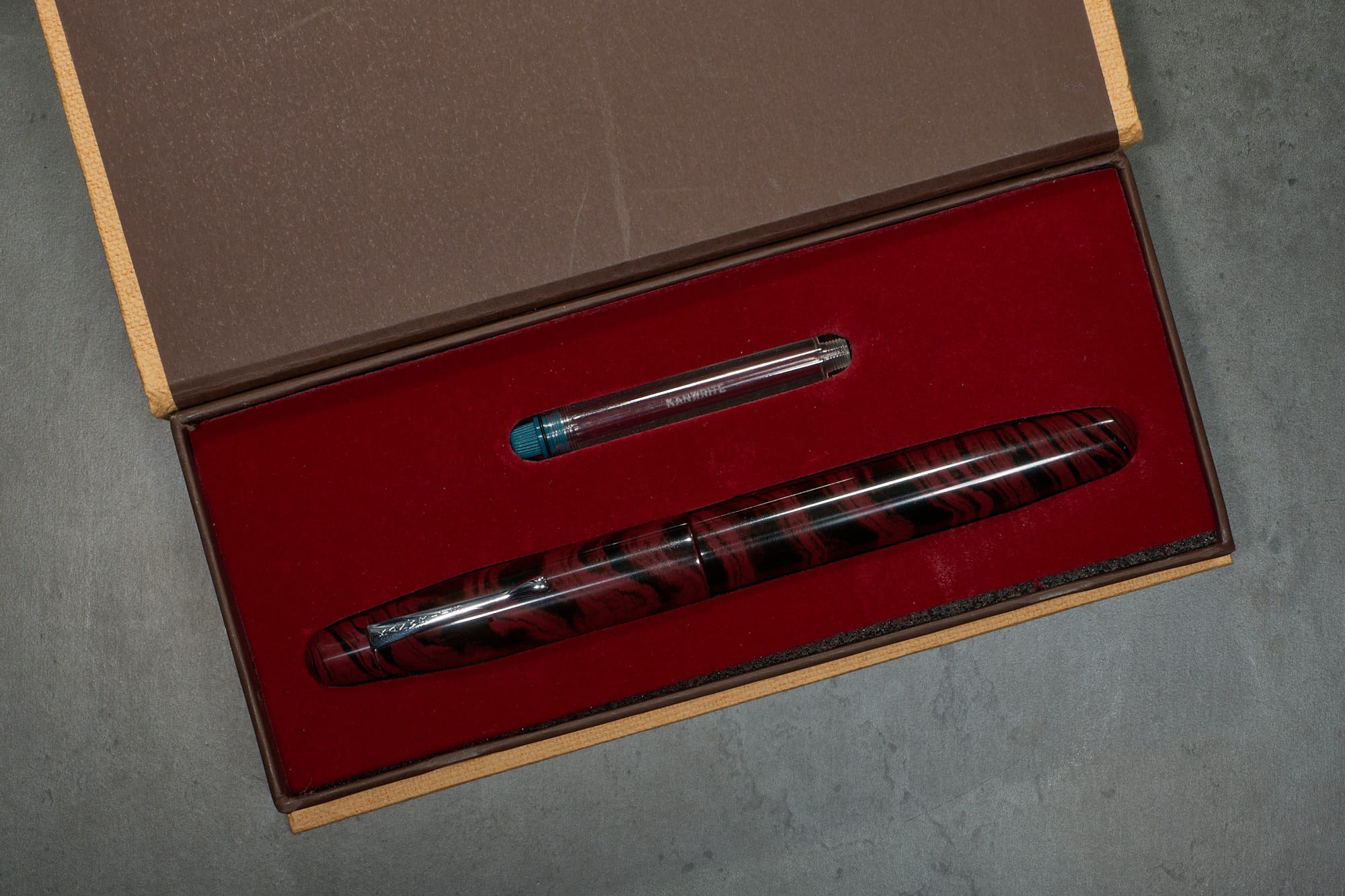
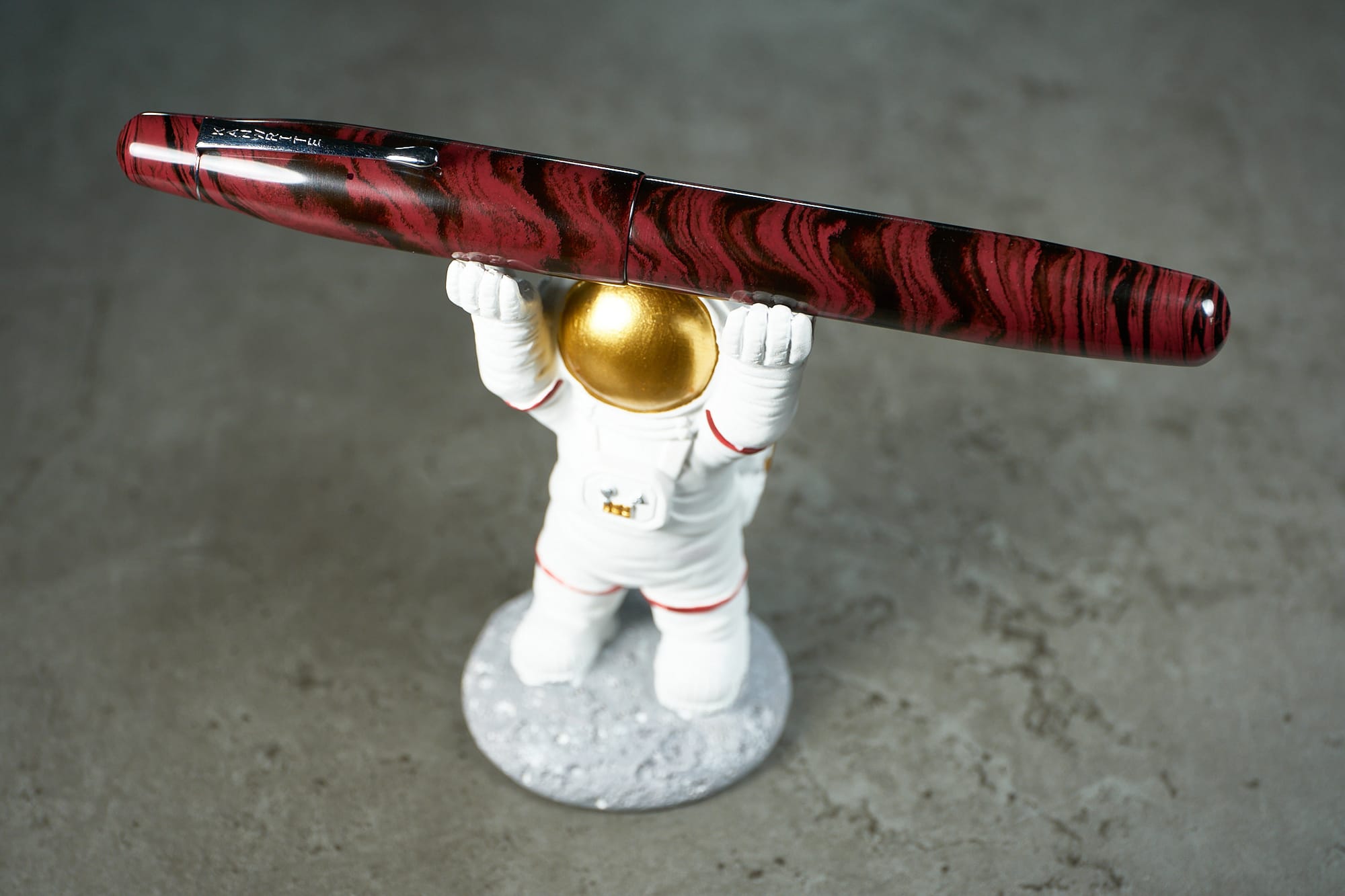
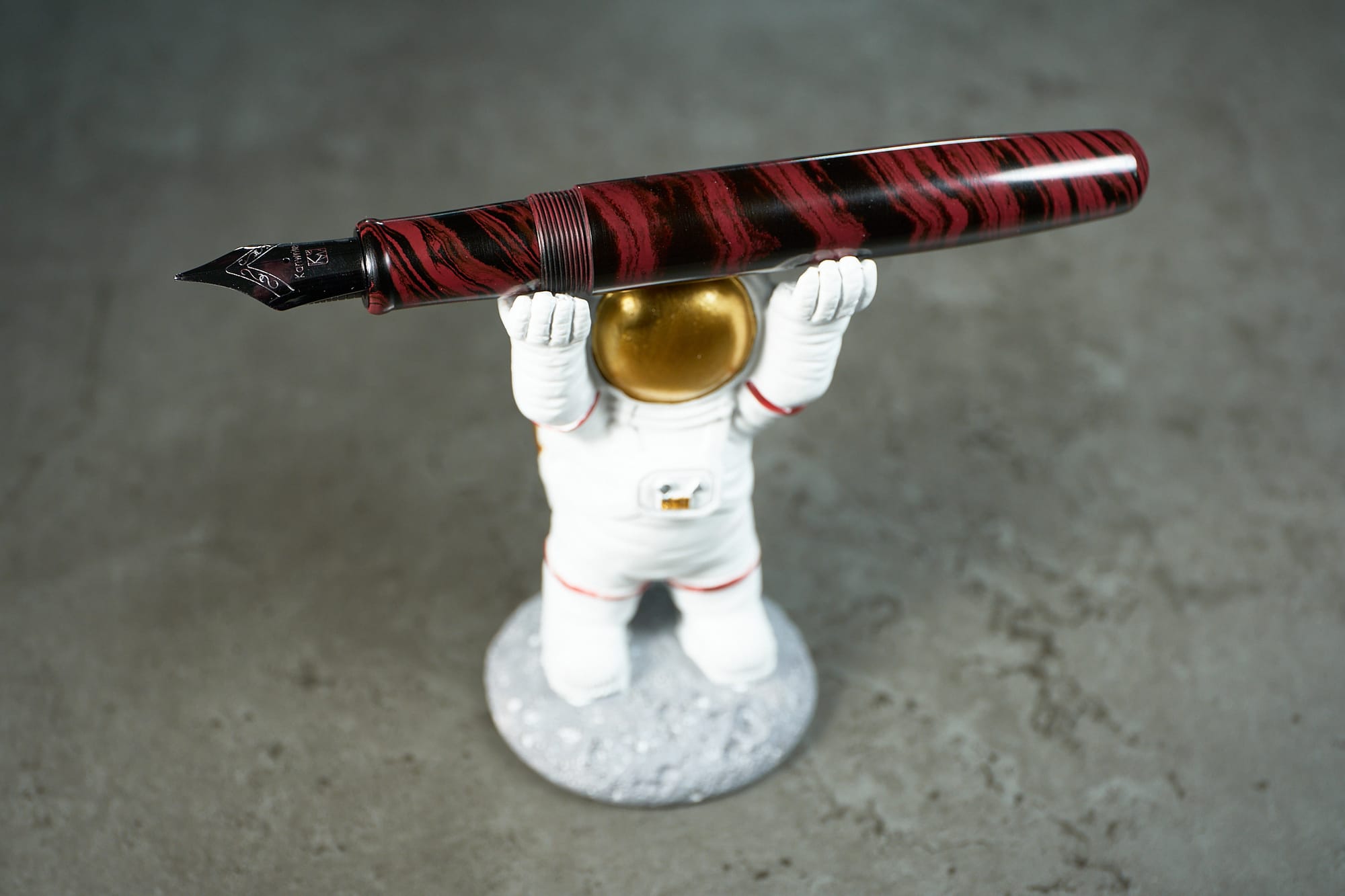
The Swirly Mammoth
The pen comes in a nice canvas-covered presentation box, and the first thing that hits you when you open the lid is just how gargantuan this pen really is. It completely lives up to its namesake. It was hard to get a true sense of the scale of this pen from the pictures I'd seen, so even though I expected it to be big, it still took me by surprise. Along with the pen, you get a giant converter that makes even the Jinhao Dadao 9019's chonky converter look small, along with a large & cleverly designed resealable cartridge. The cartridge has a little blue screw cap that seals it when not in use, and then screws onto the back of the cartridge when installed in the pen, making it ideal for taking with you as a spare. Both of these are proprietary for fairly obvious reasons. It wouldn't make any sense to hamper a pen with a nib as wet and large as this with the comparatively measly amount of ink & small opening a standard international cartridge or converter would give you. The cartridge holds a generous 2.5ml of ink, while the converter—despite its massive size—holds a fairly mediocre 1ml. Granted, as this is an ebonite pen you could probably get away with eyedroppering it if you add an o-ring, but I'd say 90% of the time you're better off just using the empty cartridge. The nib is so large that there are few ink bottles that can accommodate filling it the normal way with the converter in situ. You can't fill it by dipping the converter directly into the bottle either. Because the opening of the converter is around the same size as your average Sarlacc pit, there is zero surface tension to keep the ink in there, so as soon as the converter is even slightly tilted, the ink is dumped straight out. The only reliable way to fill it is by using a syringe, at which point you may as well just use the larger capacity cartridge. This is probably my main complaint with the pen, but it kinda comes with the territory with pens of this size.
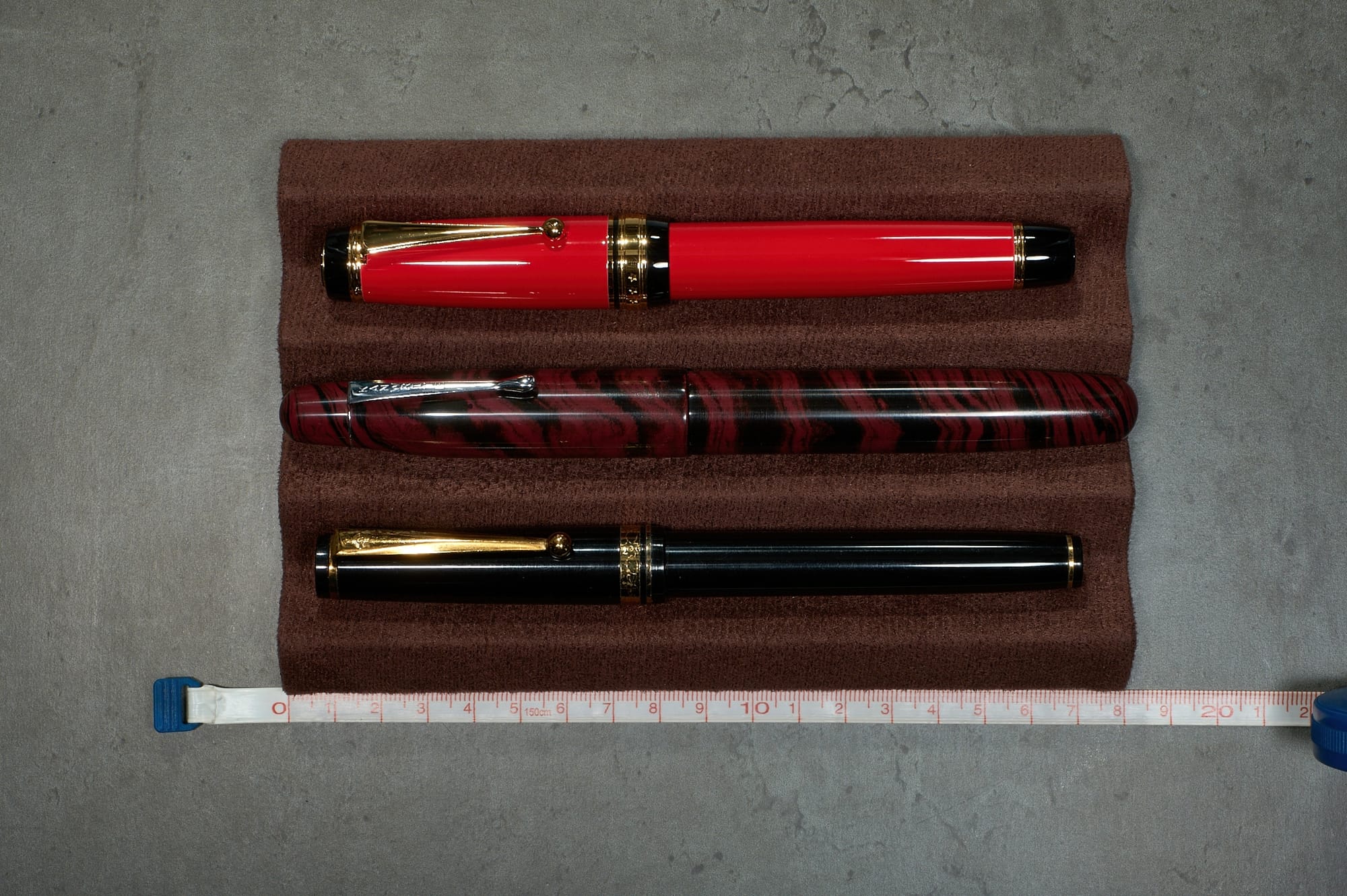
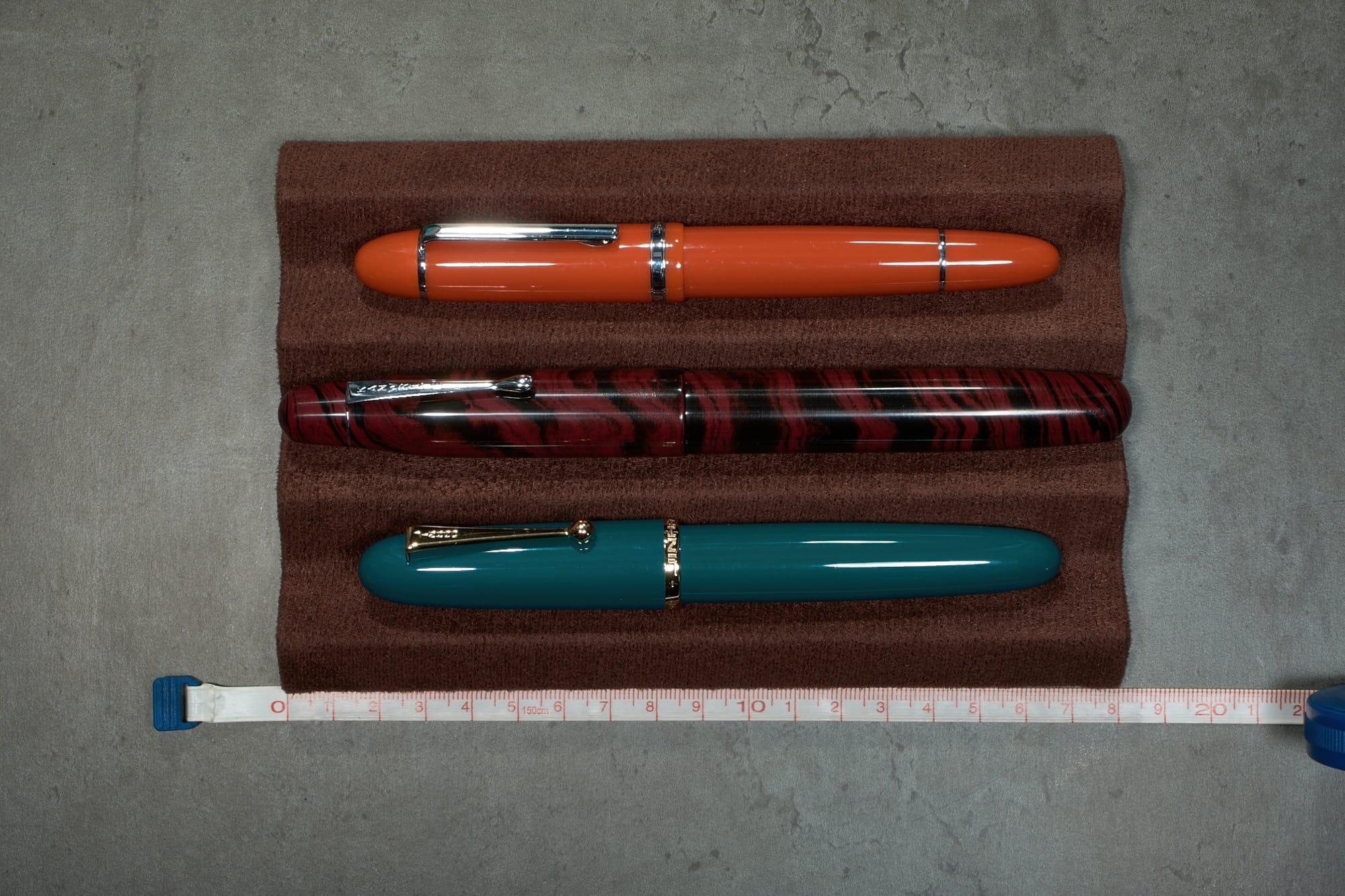
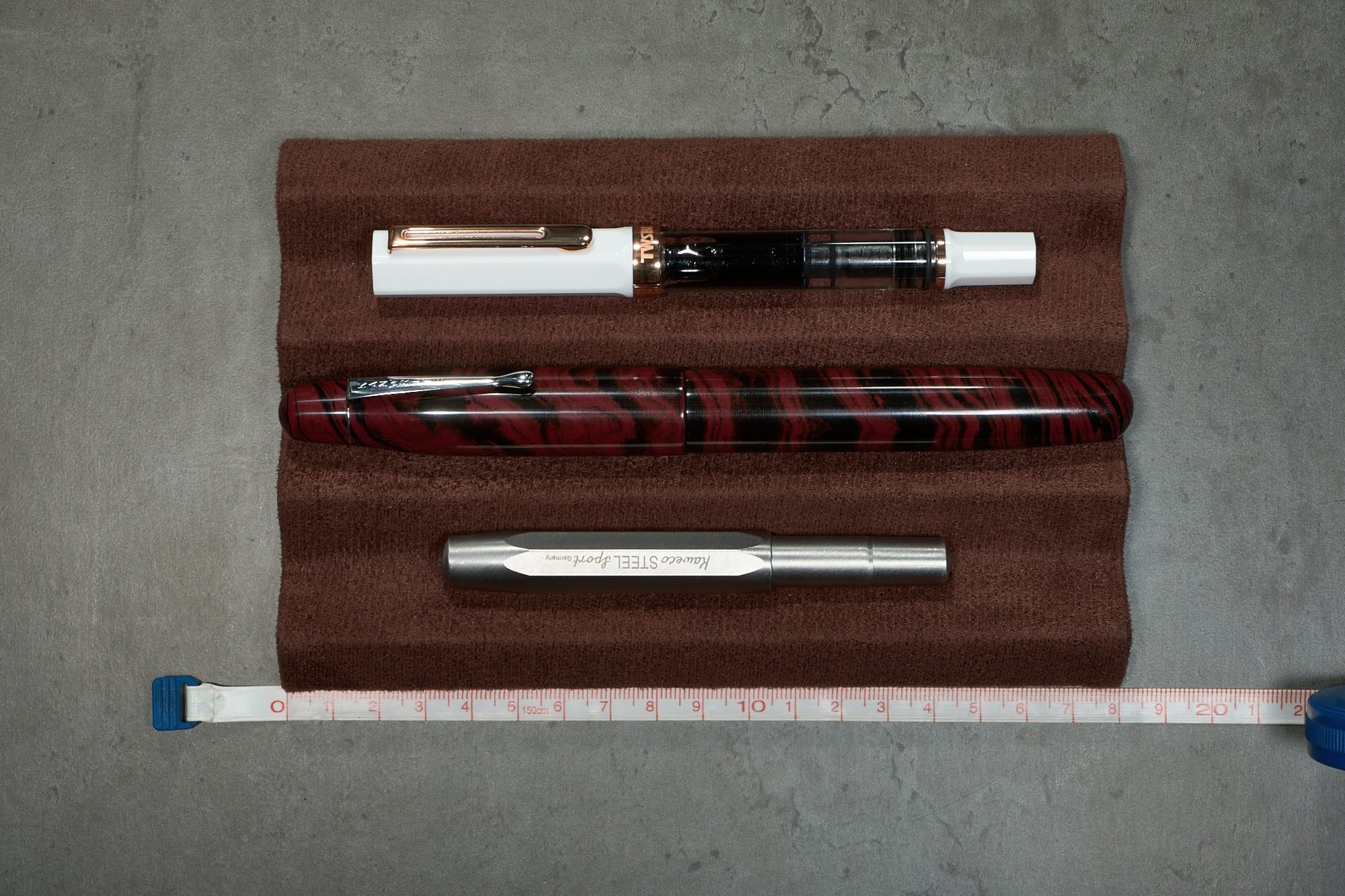
Size comparisons of various pens. JD Big Pen, Kanwrite Mammoth, Wing Sung 590 | Jinhao X159, Kanwrite Mammoth, Jinhao Dadao 9019 | TWSBI Eco, Kanwrite Mammoth, Kawweco Steel Sport
Speaking of size, here are the details: It measures just shy of 180mm long, the body is a little over 17.5mm wide, and the whole pen (including the fully inked converter) weighs just over 41g. I mentioned earlier that I wasn't initially keen on the red swirl model, but I am so glad that this was the only one left. It's gorgeous! I think I'm okay with this style because it doesn't look like it's imitating wood the way many ebonite pens do. It's much more akin to swirly acrylic, and it makes it far more visually interesting than the plain black. The pen is predominately a straight rod that slightly tapers down to rounded ends. The end of the body taper's gently to 14mm before rounding off, but the cap has a steeper taper with an elongated finial dipping down to 12mm before rounding off. A difference of 2mm doesn't sound like much, but it completely throws off the visual balance of the pen. I'm not sure why the cap finial is elongated like that, as it's not needed to accommodate the nib tip. It's an odd decision, to be sure, but one I can ultimately live with. The section has a slight taper from 15mm down to 14mm, with a rounded finger-stop at the end so that your fingers don't slip onto the ludicrously large nib. The cap takes 3.5 turns to remove, which normally would be a downside for me. However, because of the sheer size of this pen, I find myself slowing down when I use it. I'm enjoying the entire process of uncapping, writing, then recapping again. Even my grip is significantly relaxed to the point that it almost becomes standard! It's an exceptionally comfortable pen to use. Because it's made from ebonite, the pen is lighter than you might expect a pen of this size to be. Not so much that it feels cheap, but enough for it to be comfortable over prolonged periods. The material has the signature ebonite warmth to it, and the glossy, polished finish is grippy enough that my fingers never slipped while using the pen.
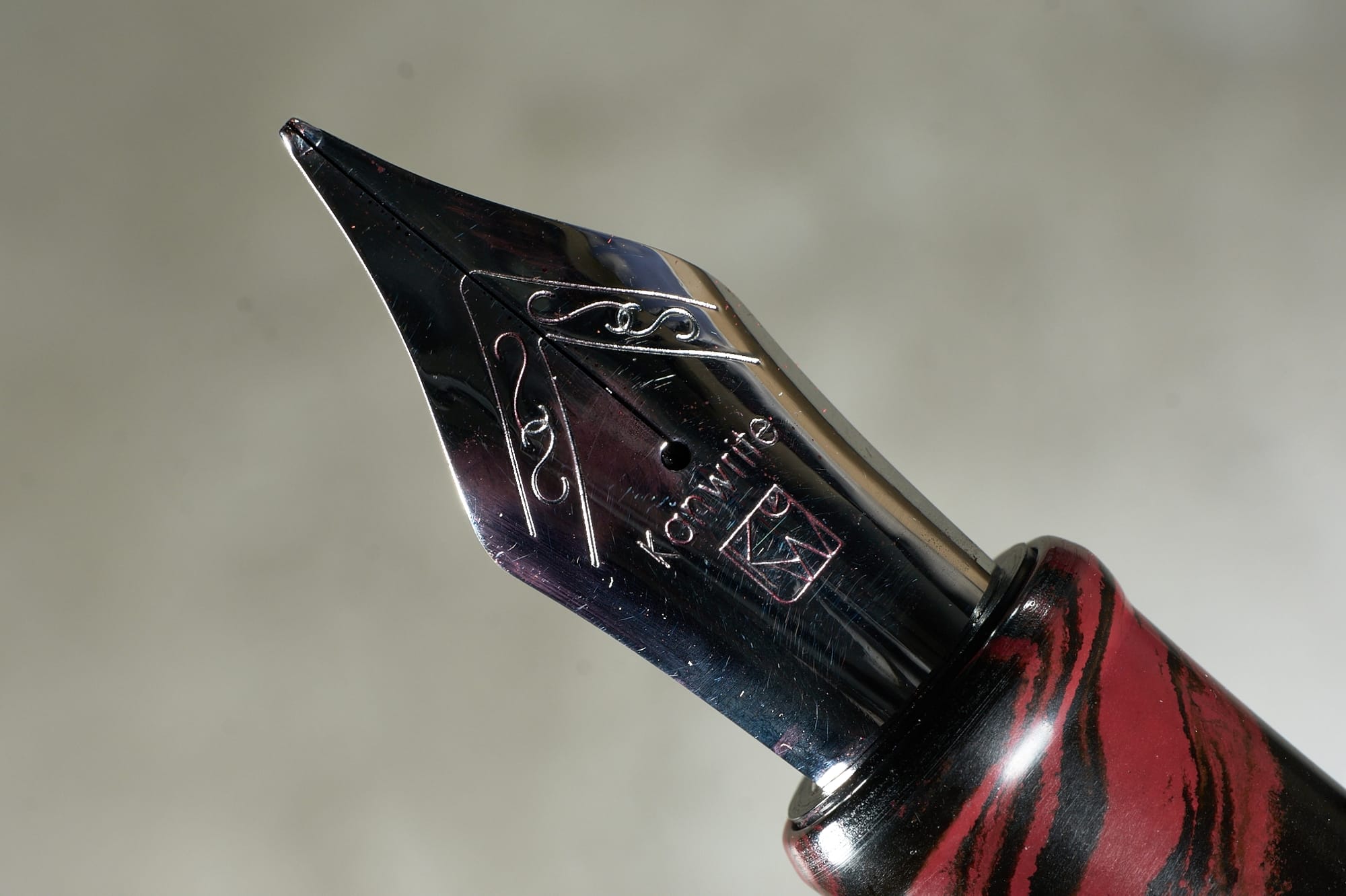
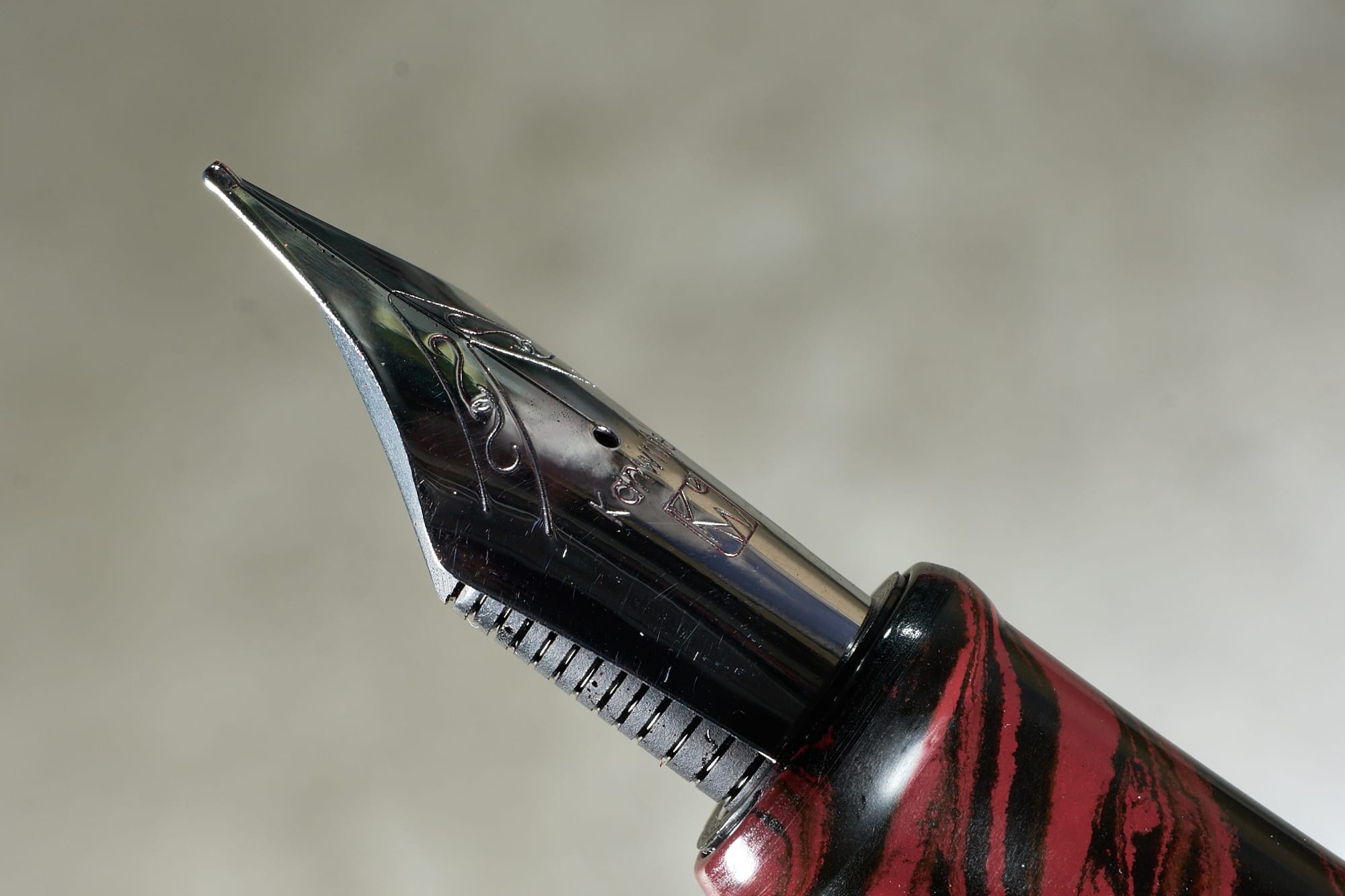
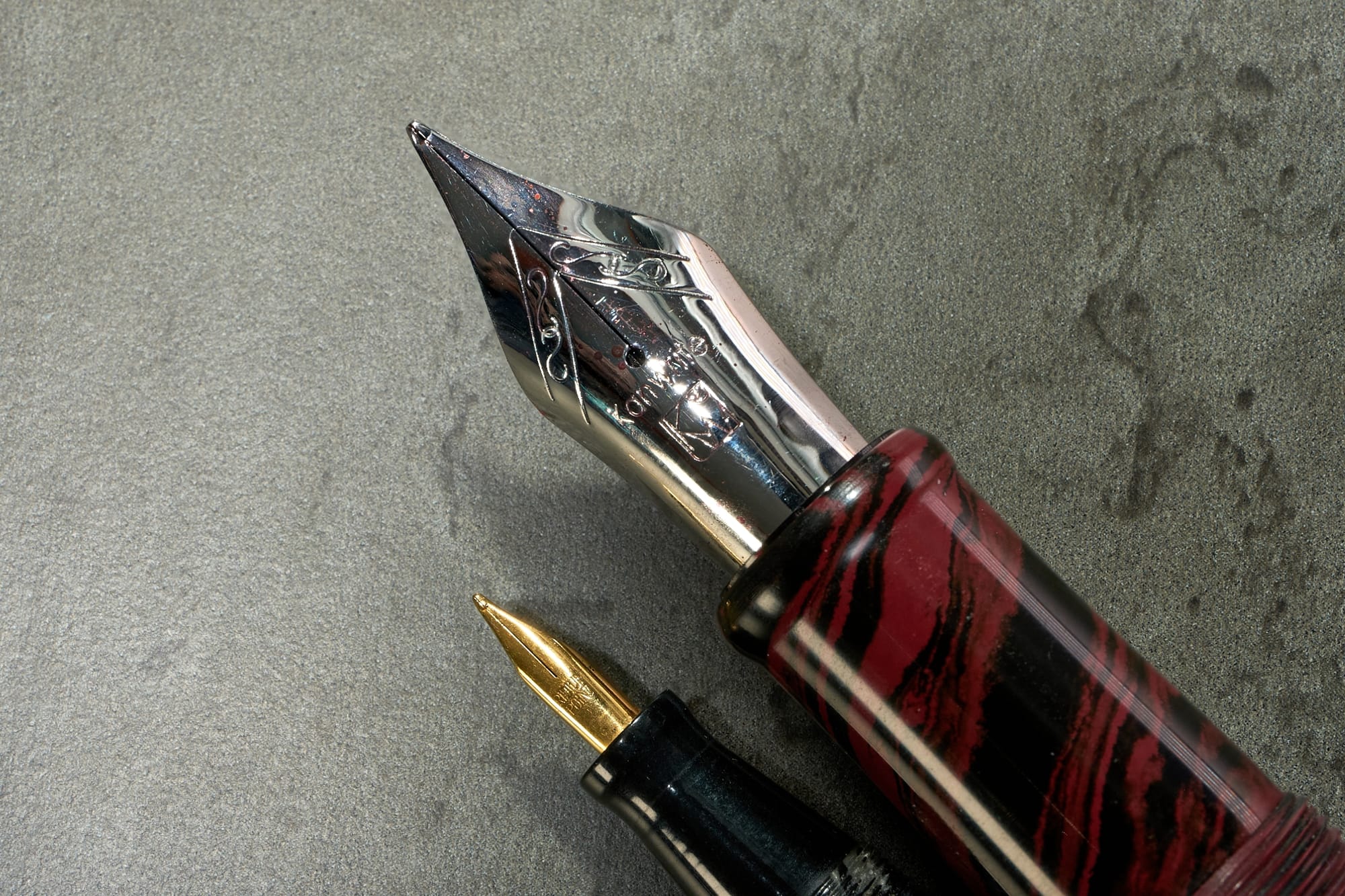
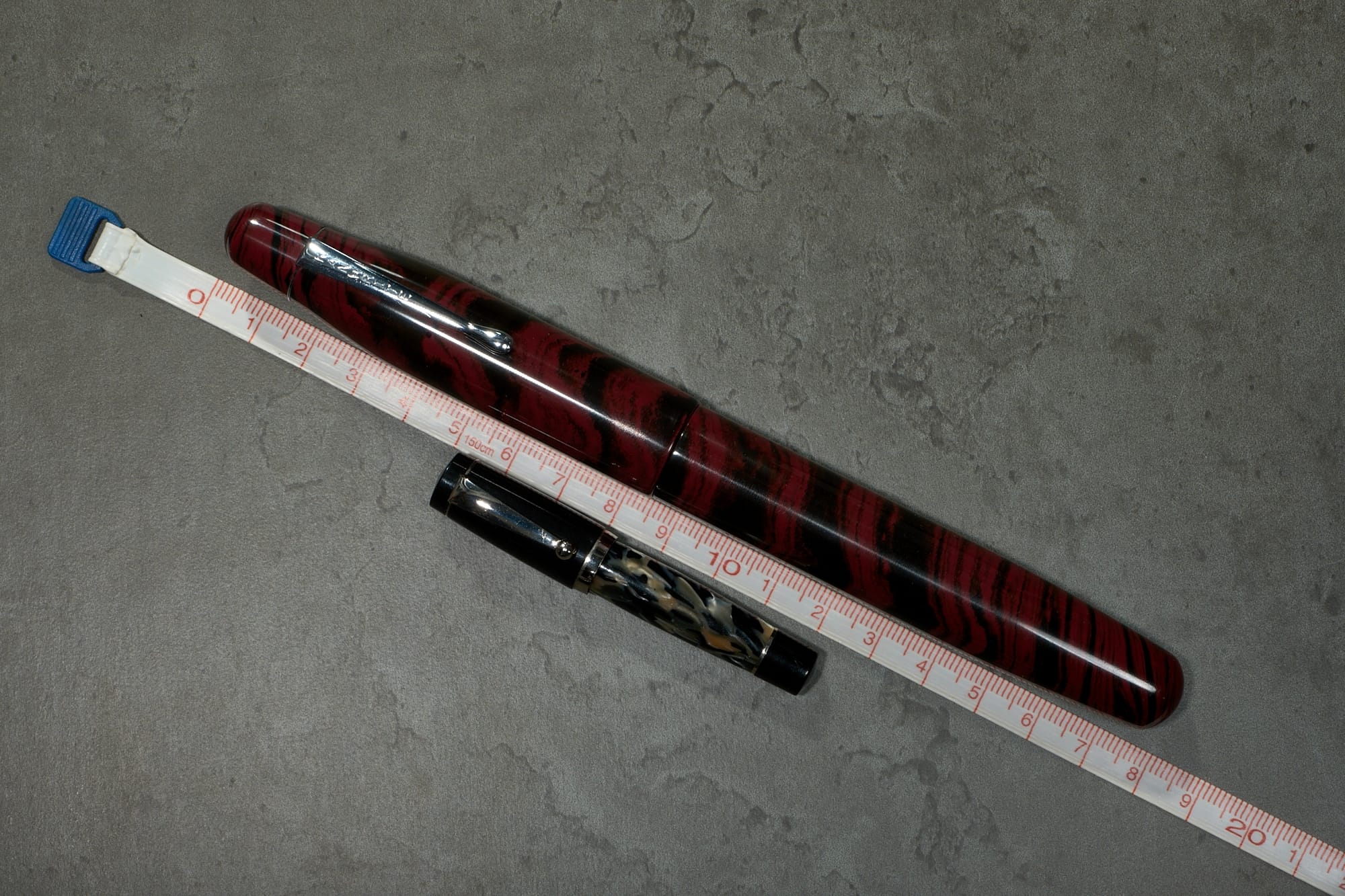
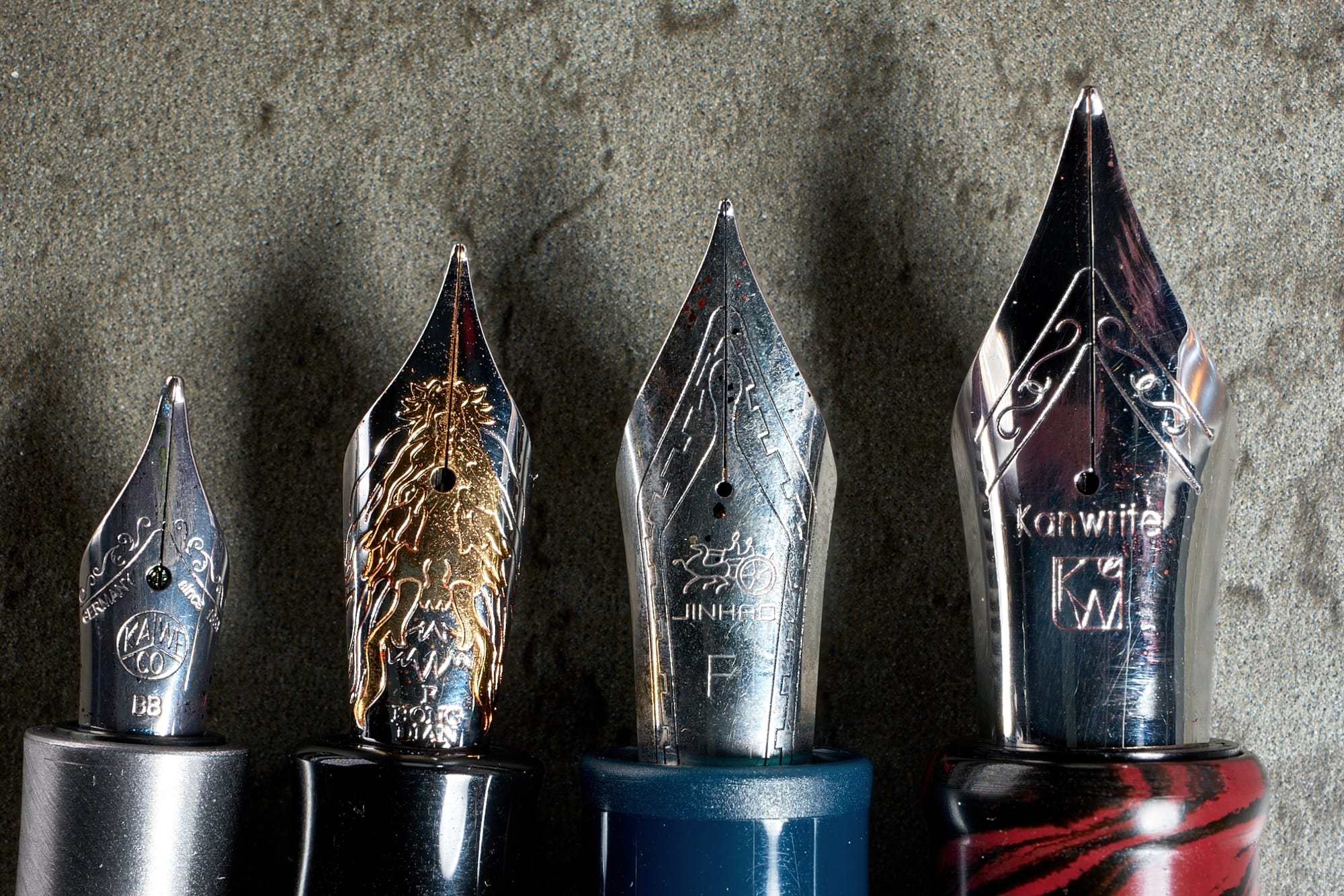
The giant #9 nib & ebonite feed, a comparison of my largest & smallest pen (Filcao Classico Micro), & a comparison of various nib sizes (#5, #6, #8, #9)
There's one last part of the pen that I haven't really talked about much yet, and it's arguably the most unique and important part of this pen: The #9 steel nib. Yes, you read that correctly, a #9 nib. Kanwrite specialise in nibs, being the largest nib manufacturer in India, so it's no surprise that it's fantastic. The nib I got is a medium, but it produces a line closer to a broad, or even double broad. I tend to have pretty small handwriting, so this has been forcing me to write larger than usual. Despite that, I still love writing with it every opportunity I get. It's wonderfully smooth without feeling glassy, and because of its size it's also fairly soft, so you can get a touch of line variation with only a little pressure. This is not a flex nib, though, so don't try to push it. It also does a decent job with reverse writing, getting you a line width akin to a fine nib. The ebonite feed channels a huge amount of ink to the nib, so it's a wet writer without quite becoming a gusher. I chose Diamine Oxblood for this pen, as it's an almost exact match to the burgandy swirls in the ebonite. Visually, the nib looks perfectly proportioned for this pen, to the point that I often forget that it's significantly bigger than #8 nibs. It's only when I put them side-by-side that it really hits home.
So, do I recommend this pen? If you're a fan of large pens, then absolutely. I really can't over-emphasize how much I enjoy even just the simple act of uncapping it. I find the entire process of using this pen to be grounding, slowing me down and letting me savour the experience and the time I spend using it. That sounds horribly pretentious, but it's true. I haven't experienced that with any other pen I've ever used. It's well worth the money, provided you can find it. Thankfully, that should be a bit easier now that Fountain Pen Revolution have started stocking them, albeit a bit more expensive at £107. I still feel it's worth the higher price, though, and you do get more nib choices with FPR. On the other hand, if you find pens like the X159 are uncomfortably big, then this isn't the pen for you. And that's okay. It's a niche pen, after all. But for those of you who enjoy pens on the larger size, I'm sure you'll fall in love with it, too.
